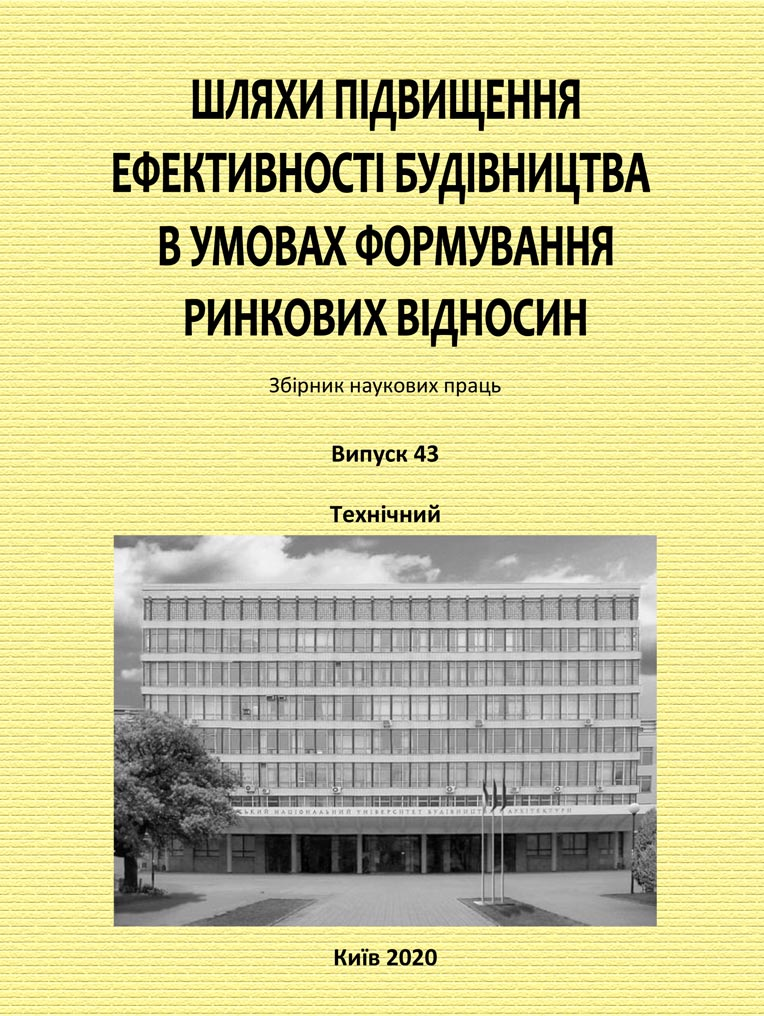Technogenesis as a factor feature of technogenicconditioned heat supply systems in which electromagnetic fields are used in the preparation of water
DOI:
https://doi.org/10.32347/2707-501x.2019.42.106-113Keywords:
technogenesis, economic and energy resources, electromagnetic fields, passive monitoring, self-organization of heat supply systems (thermodynamics and synergetics), indicator control systemsAbstract
Modern civilization in the twenty-first century has entered a new phase of its development, when people have taken on the function of integrating their knowledge to create new nanotechnologies that are highly efficient for the economy and energy production and safe for environmental impact.
The article emphasizes that the main tactical intention to ensure high efficiency of production processes and preventive production activities in construction in the process of non-reagent preparation of water in electromagnetic fields (magnetized water of heat supply systems) is the unification of organizational and management decisions in the process of operation of heat power systems (feasibility studies) in order to achieve reliable analytical information on the results of passive monitoring of material flow status of feasibility studies.
The key tactical intentions of achieving high efficiency of production processes of prophylactic production activities in the process of non-reactive water treatment in electromagnetic fields (magnetized water in heating systems) are the unification of organizational and management decisions in the operation of systems of thermal power facilities (GPO) in order to achieve reliable analytical information about the results of monitoring the passive state of material flow in the systems of GDO. As the results of the studies showed, the sensitivity of the methods used to control the state of material flows of HPO systems allows to determine the dynamics of the components of material flows in time and space.
According to the scientific and technical literature and personal research, the technology of using magnetized water for its preparation in heating systems is relevant and promising due to its implementation (based on experimental testing) and saving energy and material resources, as well as the formation of biological fouling. We have found that the sensitivity of the information-analytical system, which is material flows, arises in complex inorganic systems, which is a major factor in the sequence of operation of water treatment technology in electromagnetic fields (EMF). This is confirmed by the fact that the proposed analytical control system (indicator) is, with the linearity of the calibration functions, a feature of determining the concentration below which it is impossible to determine the presence of this component in the material flows.
References
1. Malkin E.S., Furtat, I.E. & Zhuravska, N.Y. (2017). Special Issues of Heat and Mass Transfer. Monograph, 288 p.
Zhuravska, N. (2017). Ecological scientific aspects of technogenic safety with nonchemical water treatment for a technical water supply. III International scientificpractical conference "Underwater Technologies".
Zhuravska, N. (2018). Ensuring technological reliability of energy-saving technologies with reagent-free water treatment. USEFUL. SVP4U-KYIV-1-FUND LLC, 2 (2), 1-8.
4. Malkin, E.S., Furtat, I.E. & Zhuravska N.Y. (2015) Patent for utility model No. 102494. The system of preparation of electromagnetic water in the electromagnetic fields and solutions and compounds based on it. 10/26/2015
Bilyavsky, G.O. & Butchenko, L.I. (2006). The basics of ecology theory and practicum. Educ. manual.
Zhiguts, Y.Y. & Lazar, V.F. (2012). Engineering Ecology,/170 p.
Lavrik, V.I. (2002). Methods of mathematical modeling in ecology. 312 p.
Kachinsky, A.B. (2001). Ukraines environmental safety: a systematic analysis of prospects for improvement, 312 p.
Lisichenko, G.V., Khmil, G.A. & Barabashev, S.V. Anthology of environmental risk assessment , 368 p.
Yreen Yrowth. Indicators 2014 [Electronic resource] // OECD. - 2014. - URL: http: // www.oecd. org. / env. / green - growth - indicators - 2013 - 9789264202030 - en.htm.
Malkin, E.S., Furtat, I.E., Usachev, V.P. & Zhuravska, N.Y. (2018) Prospects for creation of resource-saving technologies by magnetic treatment of water and aqueous solutions. Ventilation, lighting and heat and gas supply: NTZ, 17, 120-127.
Kulikov, P.M. & Zhuravska, N.Y. (2019). Patent for utility model No. 136436. A method of controlling the process of water magnetization in heat supply systems. 27.08.2019.
Kulikov, P.M. & Zhuravska, N.Y. (2018) Scientific and methodological structure of man-made hazard and risk management in the preparation of technical water in the heat supply system // Intellectual property - copyright for a work. Literary written work of a scientific and technical nature. Application No. 86018. - 12.12.2018. - 11 p.
Timofeev, S.S., Medvedev, S.A. & Larionov, E.Y. (2004). Fundamentals of modern natural science and ecology, 384 p.
Kulikov, P. Zhuravska, N. Thermodynamic concept of operation of systems of thermal power objects of the building industry. Scientific development and achievements. (Collective monograph). - Sciemcee Publishing. 5 392-402. URL: /// C: / Users / User / Downloads / Kurpe Kukhar_Monogr Part_London2018. pdf. (accessed on: 08/08/2019).
Downloads
How to Cite
Issue
Section
License
Copyright (c) 2020 N. Zhuravska

This work is licensed under a Creative Commons Attribution 4.0 International License.
Authors who publish with this journal agree to the following terms:
- Authors retain copyright and grant the journal right of first publication with the work simultaneously licensed under a Creative Commons Attribution License that allows others to share the work with an acknowledgement of the work's authorship and initial publication in this journal.
- Authors are able to enter into separate, additional contractual arrangements for the non-exclusive distribution of the journal's published version of the work (e.g., post it to an institutional repository or publish it in a book), with an acknowledgement of its initial publication in this journal.
- Authors are permitted and encouraged to post their work online (e.g., in institutional repositories or on their website) prior to and during the submission process, as it can lead to productive exchanges, as well as earlier and greater citation of published work (See The Effect of Open Access).

